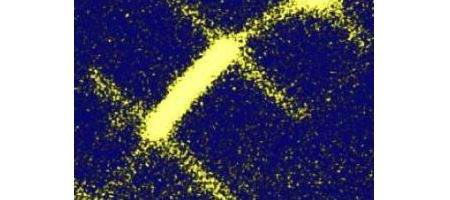Stanford University engineers have created a device that can detect light while itself remaining invisible.

It’s based on silicon nanowires covered by a thin cap of gold. By exploiting nanoscale physics, the team’s been able to make the device invisible – the first time plasmonic cloaking’s been used for this.
Plasmonics is the study of how light interacts with metal nanostructures and induces tiny oscillating electrical currents along the surfaces of the metal and the semiconductor. These currents, in turn, produce scattered light waves.
By tuning the geometries – adjusting the ratio of metal to silicon – the engineers have created a plasmonic cloak in which the scattered light from the metal and semiconductor cancel each other out perfectly through what’s known as destructive interference.
The rippling light waves in the metal and semiconductor create a dipole moment, a separation of positive and negative charges in the materials. When equally strong positive and negative dipoles meet, they cancel each other and the system becomes invisible.
“It seems counterintuitive, but you can cover a semiconductor with metal – even one as reflective as gold — and still have the light get through to the silicon,” says professor Mark Brongersma.
“As we show, the metal not only allows the light to reach the silicon where we can detect the current generated, but it makes the wire invisible, too.”
Plasmonic cloaking works across much of the visible spectrum of light, and regardless of the angle of incoming light or the shape and placement of the metal-covered nanowires in the device. Other metals commonly used in computer chips, like aluminum and copper, work just as well as gold.
The engineers see applications in solar cells, sensors, solid-state lighting and chip-scale lasers.
In digital cameras and advanced imaging systems, for example, plasmonically cloaked pixels could reduce cross-talk between neighboring pixels and lead to sharper, more accurate photos and medical images.






